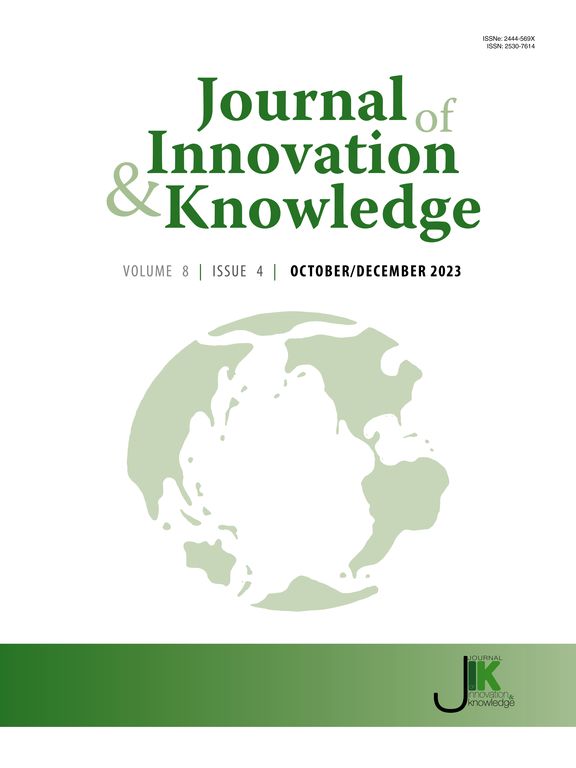揭示隐藏的动力:人格特征、人口因素和知识隐藏的构形分析
IF 15.6
1区 管理学
Q1 BUSINESS
引用次数: 0
摘要
知识隐藏在工作场所是一个普遍存在的问题,它会对个人和组织产生各种负面影响。在复杂性理论的基础上,本研究探讨了与工作场所知识隐藏相关的复杂因果关系。也就是说,我们探索了个人层面因素之间的相互关系:1)人口统计学特征(年龄、性别、教育和经验),以及2)人格特征(即大五人格和黑暗三人格)和知识隐藏行为。我们收集了157名酒店业员工的数据,并使用模糊集定性比较分析(fsQCA)进行了分析。我们的结果强调了导致知识隐藏行为(即结果)的人口统计学特征和人格特征的多种配置(即因果条件)。我们的研究结果揭示了25个独特的特征,结合了人格特征和人口统计因素,其中14个与知识隐藏的存在有关,11个与知识隐藏的不存在有关。特别是,马基雅维利主义作为驱动知识隐藏存在的核心条件出现,而外向性被确定为与知识隐藏缺失相关的核心条件。这是有史以来第一次全面调查员工性格特征和与他们的知识隐藏行为相关的人口因素之间相互作用所产生的不同概况的研究。本文章由计算机程序翻译,如有差异,请以英文原文为准。
Unveiling the hidden dynamics: A configurational analysis of personality traits, demographic factors, and knowledge hiding
Knowledge Hiding is a pervasive problem in the workplace, which can have various negative consequences for individuals and organizations. Drawing from the underpinning of complexity theory, this study investigates the complex causal interrelationships associated with knowledge hiding in the workplace. That is, we explore the interrelationships of individual-level factors: i) demographic characteristics (age, gender, education and experience), and ii) personality traits (i.e., Big-5 and the Dark Triad), and knowledge hiding behaviours. We collected data from 157 employees in the hospitality sector and analyzed by using fuzzy-set qualitative comparative analysis (fsQCA). Our results highlighted multiple configurations of the demographic characteristics and personality traits (i.e., causal conditions) leading to knowledge hiding behaviours (i.e., outcome). Our findings revealed a total of 25 unique profiles combining personality traits and demographics factors–14 associated with the presence of knowledge hiding, and 11 linked to its absence. In particular, Machiavellianism emerged as a core condition driving the presence of knowledge hiding, while extraversion was identified as a core condition associated with its absence. This is the first-ever study comprehensively investigating distinct profiles resulting from the interplay between employees' personality traits and demographic factors associated with their knowledge hiding behaviour.
求助全文
通过发布文献求助,成功后即可免费获取论文全文。
去求助
来源期刊

Journal of Innovation & Knowledge
Multiple-
CiteScore
16.10
自引率
12.70%
发文量
118
审稿时长
37 days
期刊介绍:
The Journal of Innovation and Knowledge (JIK) explores how innovation drives knowledge creation and vice versa, emphasizing that not all innovation leads to knowledge, but enduring innovation across diverse fields fosters theory and knowledge. JIK invites papers on innovations enhancing or generating knowledge, covering innovation processes, structures, outcomes, and behaviors at various levels. Articles in JIK examine knowledge-related changes promoting innovation for societal best practices.
JIK serves as a platform for high-quality studies undergoing double-blind peer review, ensuring global dissemination to scholars, practitioners, and policymakers who recognize innovation and knowledge as economic drivers. It publishes theoretical articles, empirical studies, case studies, reviews, and other content, addressing current trends and emerging topics in innovation and knowledge. The journal welcomes suggestions for special issues and encourages articles to showcase contextual differences and lessons for a broad audience.
In essence, JIK is an interdisciplinary journal dedicated to advancing theoretical and practical innovations and knowledge across multiple fields, including Economics, Business and Management, Engineering, Science, and Education.
 求助内容:
求助内容: 应助结果提醒方式:
应助结果提醒方式:


